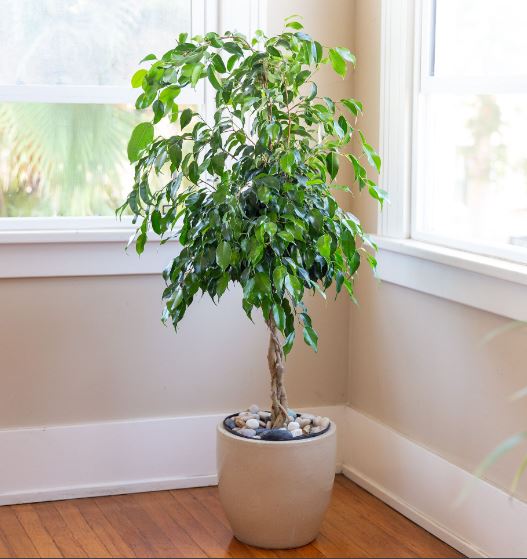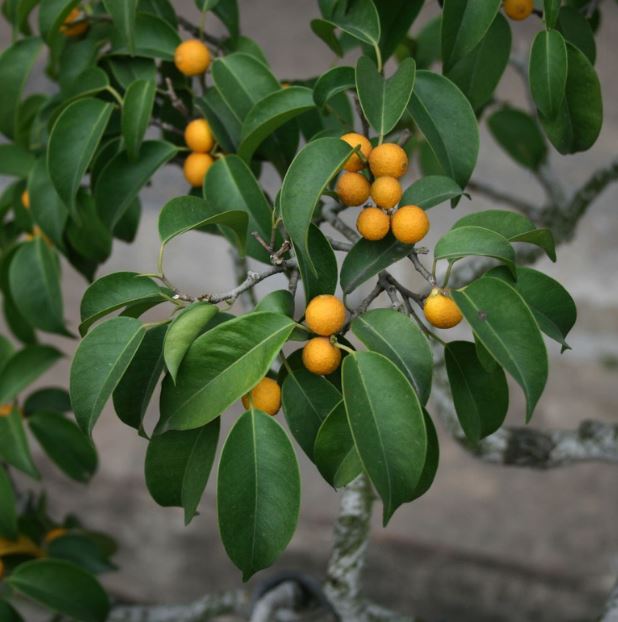Description
The plant usually begins life as an epiphyte, growing in the branch of another tree; as it grows older it sends down aerial roots which, when they reach the ground quickly form roots and become much thicker and more vigorous.
They supply nutrients to the fig, allowing it to grow faster than the host tree.
The aerial roots gradually encircle the host tree, preventing its main trunk from expanding, whilst at the same time the foliage smothers the foliage of the host.
Eventually the host dies, leaving the fig to carry on growing without competition.
It is very ornamental, being widely cultivated in the tropics and subtropics and used as an avenue and shade-providing tree.
Plants are damaged by frost but will often recover if the frost was light.
Succeeds in full sun to partial shade
Tolerant of strong winds.
The leaves are very sensitive to small changes in light.
When it is re-located it reacts by dropping many of its leaves and replacing them with new leaves adapted to the new light intensity
However, the aggressive rooting system makes it unsuitable for growing near buildings, drains etc., and it would also compete for nutrients with other plants growing nearby.
[ Pollinators : Wasps ]
Fig trees have a unique form of fertilization, each species relying on a single, highly specialized species of wasp that is itself totally dependent upon that fig species in order to breed.
The trees produce three types of flower; male, a long-styled female and a short-styled female flower, often called the gall flower.
All three types of flower are contained within the structure we usually think of as the fruit.
The female fig wasp enters a fig and lays its eggs on the short styled female flowers while pollinating the long styled female flowers.
Wingless male fig wasps emerge first, inseminate the emerging females and then bore exit tunnels out of the fig for the winged females.
Females emerge, collect pollen from the male flowers and fly off in search of figs whose female flowers are receptive













Reviews
There are no reviews yet.